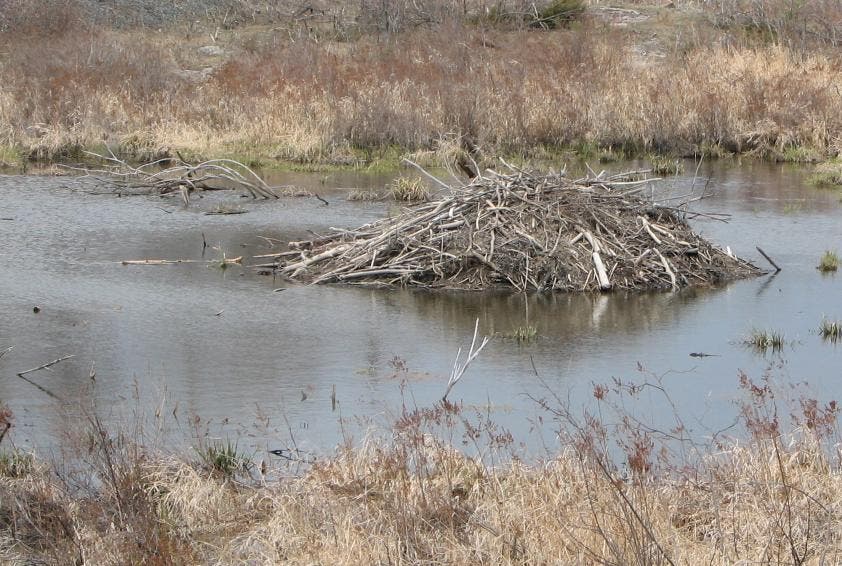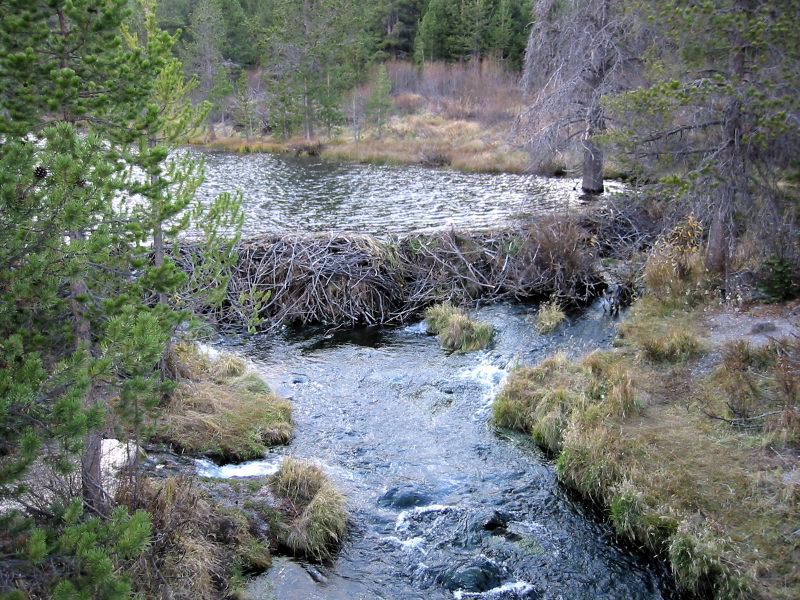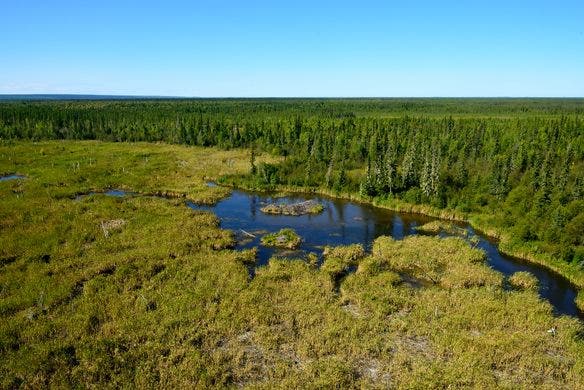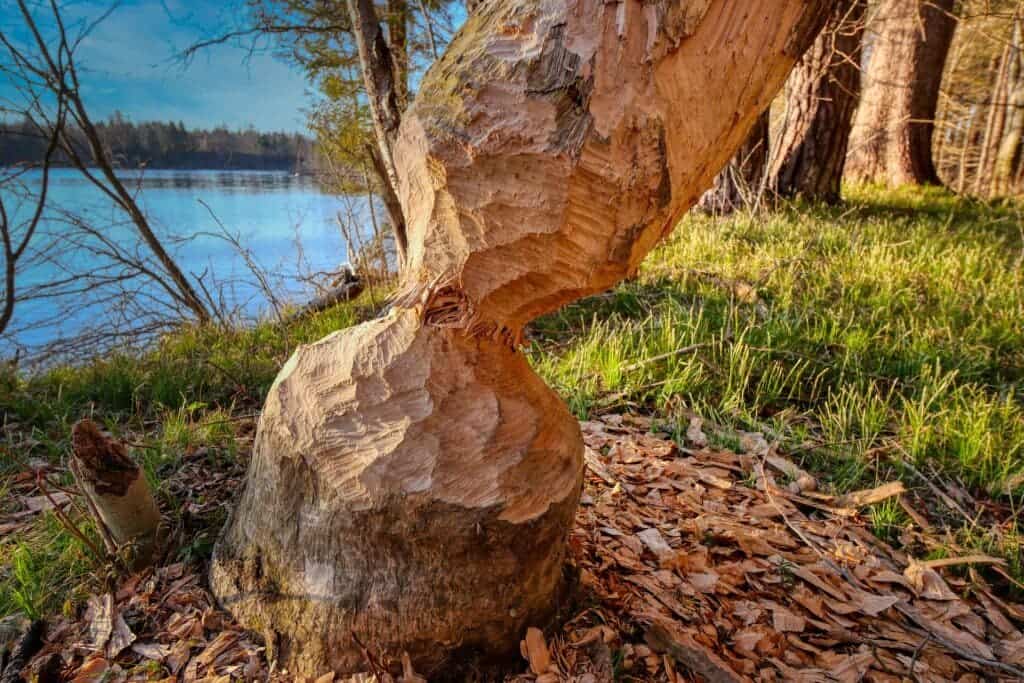Humans are not the only species on Earth who use engineering to manipulate their surroundings and build impressive structures. Beavers, the second-largest rodents on our planet, are also gifted with engineering skills. They’re capable of building dams that can last for decades or even more. Plus, unlike most human-made structures that cause deforestation and lead to loss of biodiversity, the construction of beaver dams increases species richness, reduces soil erosion, prevents flooding, improves water quality, and of course, provides the furry beavers with a cozy home.
But why do they do it?

The most important advantage of beaver dams is that they promote the growth of natural wetlands, according to a report from the UN, nearly 40% of the total species (including the numerous endangered organisms) on Earth depend on wetlands for their survival. Therefore, beavers play a key role in improving and maintaining the health of many ecosystems.
Since they can bring changes to the natural setting with their construction skills, they are also referred to as ecosystem engineers. Their dams can even help filter pollution, and without a doubt the impact beavers have on the environment is significant — and usually positive.
Why do beavers build dams?
Common beaver predators like coyotes, bears, bobcats, foxes, wolverines, and humans can easily catch a beaver on land — but in water, beavers can swiftly outmaneuver them with their webbed toes that are much better suited for swimming than walking.
This is also why, in order to stay out of the reach of their predators, beavers construct dams over running water. These dams divide the water body and lead to the formation of deep ponds over which beavers build their homes called lodges.

A fast-moving water stream can damage the lodges and make them wet but beaver dams keep the lodges dry, warm, and protected all the time by acting as a barrier. Dams restrict the flow of water and cause the water level to rise behind them, promoting an environment that’s suitable to beavers.
Lodges are always constructed over deep lakes, ponds, and streams so that when water starts freezing during the winters their underwater entrances do not get blocked.
Moreover, a lodge with an underwater entrance can’t easily be compromised by a terrestrial predator and in times of emergency, it can also be used as a tunnel for a swift escape. So dams improve not just the comfort but also the safety of lodges.

Beavers don’t always make dams. If they fail to find a stream that is suitable enough for constructing a dam, they make lodges and burrows in the land and live there.
How are beaver dams constructed?
Beavers may not have access to the advanced tools and machinery that we use, but they are gifted with strong jaws and ever-growing incisor teeth. Plus, a single beaver can carry up to its own weight, which makes the animals excellently suited for the task. These impressive physical features enable them to build dams and lodges that last for many years. For example, the largest beaver dam, discovered in Wood Buffalo National Park, Alberta, Canada is believed to have been constructed during the 1970s. This glorious beaver dam is about 2,780 feet (850 meters) long and researchers suggest that it has been used and maintained by many generations of beavers.
However, not every beaver dam is that big; in fact, they’re usually three to five feet high and 300 feet long. The construction of a beaver dam starts with beavers gnawing the trees and thick branches located near the bank of a river or lake. The trees and branches become weak and they fall into the water body and block the water flow, multiple fallen wooden logs and branches are arranged together to form the strong base of the dam.

The beavers then start adding mud, stones, grass, twigs, leaves, and small plants over and around the base, in order to further expand the structure and make it stronger. Once the water level on one side of the dam is deep enough to form a winter-proof lodge entrance, the beavers start constructing lodges with nesting and eating chambers in the dam structure. Beavers rest, store food, mate, and raise their children in the lodges, usually, one beaver family (having 5 to 10 members) owns a particular dam or lodge, and if some other beaver family attempts to claim the home, they don’t hesitate to fight with the intruders.
Importance of beaver dams for our ecosystem
Unfortunately, our planet already lost 35% of its wetlands by the year 2015, and since the remaining wetlands are disappearing fast, 25% of wetland species are currently facing the threat of extinction. But beavers can be of help.
The deep ponds that result from the construction of beaver dams don’t only provide beavers with a predator-proof shelter but also promote the growth of wetlands, special water-rich ecosystems that favor the growth of fish, birds, toads, otters, and numerous other endangered flora and fauna. Wetlands are carbon-dense ecosystems that also play an important role in climate regulation across the world.
Recent research has consistently shown that beavers can play a role in ecosystem conservation, and the positive impacts of their dams heavily outweigh the costs. In the UK, beavers have made an unlikely reemergence and they are now incorporated into rewilding and conservation efforts.

By limiting the flow of water to create a water reservoir, beaver dams prevent soil erosion and flooding, and increase the water content in the soil, this increased water content leads to the formation of new wetlands.
Apart from this, a beaver dam also prevents toxic chemicals from running deep into the ground and oceans, it acts as a water filter and traps sediments. By creating these dams, beavers play a very crucial role in managing our ecosystem and this is why they are considered a keystone species. An experiment conducted in 2016 demonstrated that the construction of beaver dams in a habitat increased its natural complexity and caused an improvement in the population of threatened fish Oncorhynchus mykiss (also known as rainbow trout or steelhead).
A case study of 2018 highlights that the modification of habitat by beavers affects the benthos composition in a river and leads to the growth of new invertebrate organisms in the beaver pond that are known to thrive in deep water. Interestingly, even after the beavers leave a modified habitat, the pond formed as a result of the beaver dam continues to support the biodiversity in the region.
Another research published in November 2020 reveals that beaver dams improve the water table, aid in microbial respiration, promote the growth of lotic and lentic species, positively affect biogeochemical cycling occurring in nature, provide resilience against droughts, and increase food production. A recent study from National Resources Research Institute (NRRI) also indicates that beaver dams can improve freshwater availability and contribute significantly to wetland ecosystem conservation.
The conflict between beavers and humans
Flooding caused by beaver dams can damage agricultural land and negatively impact crop production in an area. On top of that, the increased water concentration in soil due to beaver ponds can endanger the foundation of man-made structures such as roads, buildings, flyovers, etc. Moreover, apart from cutting riverside vegetation, beavers sometimes also gnaw away large trees and plants that later fall on roads and paths posing a risk to human lives.

All such events sometimes lead to the brutal treatment of these innocent beings by humans. However, there are multiple agencies, nonprofits, and environment-conscious organizations that are working together to make people aware of non-lethal and eco-friendly methods to deal with beaver-related problems.
There was a time when the North American beaver population stood around 200 million but then in the 1800s, the increased demand for beaver fur for making castor hats almost lead to their extinction. Thanks to the continued conservation efforts, the beaver population in North America has now again risen to 10 to 15 million. For now, they are not endangered but the ongoing exploitation of freshwater bodies and rapid urbanization is affecting many beaver families across the globe.
Therefore, it is very important that we make environmentally responsible decisions when it comes to employing development strategies so that both beavers and our ecosystem continue to thrive.


